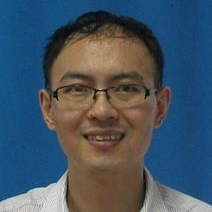Novel Carbon Nanomaterials: Preparation and Photoelectric Properties
A special issue of Molecules (ISSN 1420-3049). This special issue belongs to the section "Nanochemistry".
Deadline for manuscript submissions: closed (28 February 2023) | Viewed by 9160
Special Issue Editor
Interests: carbon quantum dots; photoelectric property regulation; structure-property relationships; catalysis
Special Issues, Collections and Topics in MDPI journals
Special Issue Information
Dear Colleagues,
Novel carbon nanomaterials have attracted a considerable amount of interest because of their unique physicochemical, structural, and photoelectric characteristics. These can pave a way to promote the development of optoelectronic devices, sensors, LEDs, displays, and solar cells fields. It is possible to finely tune their photoelectric properties suiting specific requirements. Important examples of these materials include carbon quantum dots, graphdiyne, C3N4 and hybrids.
The rapid development of technology for creating new nanostructures requires the research community to comprehensively analyze their optoelectronic properties. This Special Issue will provide excellent opportunities of the novel carbon nanostructures and will broaden the scope of nanostructure applications. We invite you to contribute full papers, reviews, or communications to this Special Issue. In all cases, the papers must demonstrate novelty and relevance to the scope. Of course, applications of novel carbon nanomaterials in different fields of science and technology will be welcome.
Prof. Dr. Liang Wang
Guest Editor
Manuscript Submission Information
Manuscripts should be submitted online at www.mdpi.com by registering and logging in to this website. Once you are registered, click here to go to the submission form. Manuscripts can be submitted until the deadline. All submissions that pass pre-check are peer-reviewed. Accepted papers will be published continuously in the journal (as soon as accepted) and will be listed together on the special issue website. Research articles, review articles as well as short communications are invited. For planned papers, a title and short abstract (about 100 words) can be sent to the Editorial Office for announcement on this website.
Submitted manuscripts should not have been published previously, nor be under consideration for publication elsewhere (except conference proceedings papers). All manuscripts are thoroughly refereed through a single-blind peer-review process. A guide for authors and other relevant information for submission of manuscripts is available on the Instructions for Authors page. Molecules is an international peer-reviewed open access semimonthly journal published by MDPI.
Please visit the Instructions for Authors page before submitting a manuscript. The Article Processing Charge (APC) for publication in this open access journal is 2700 CHF (Swiss Francs). Submitted papers should be well formatted and use good English. Authors may use MDPI's English editing service prior to publication or during author revisions.
Keywords
- Carbon nanomaterials
- Carbon quantum dots
- Preparation
- Optical property regulation
- Photoelectric properties
- Optoelectronic devices
- Sensors
- LEDs
- Display
- Solar cells






